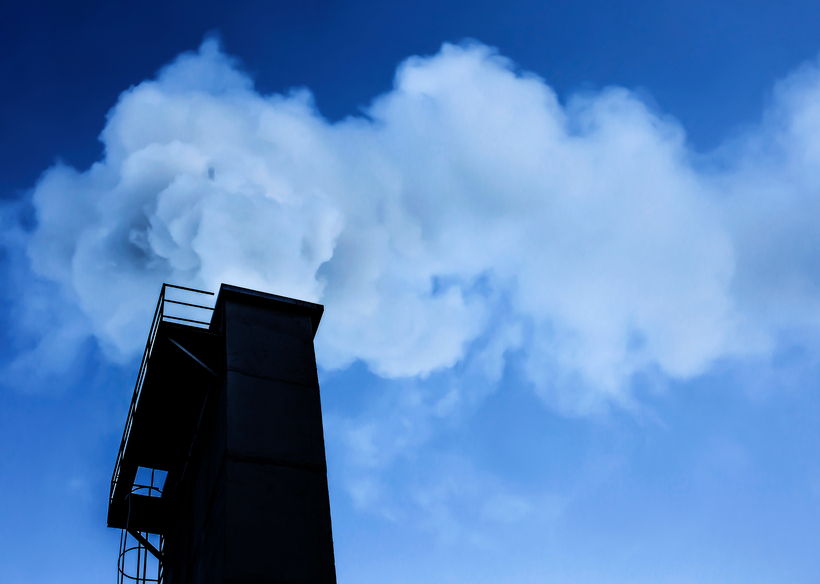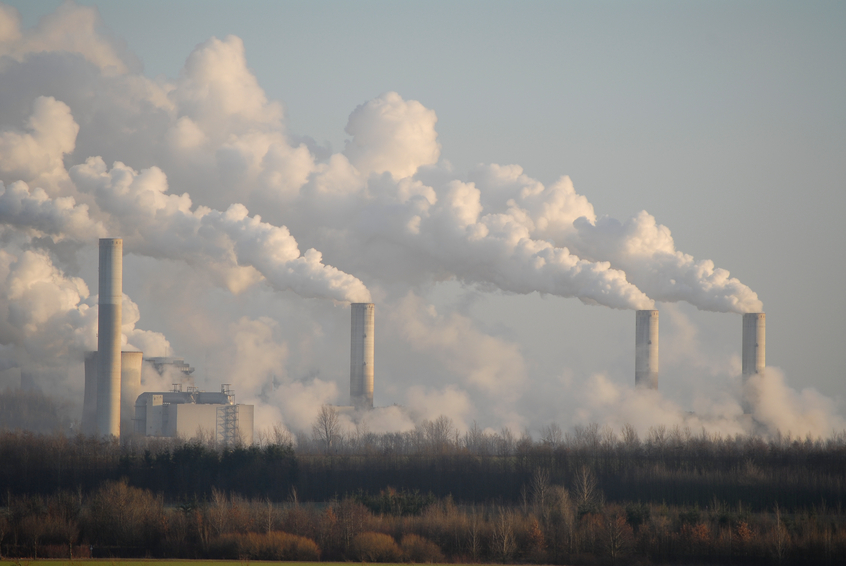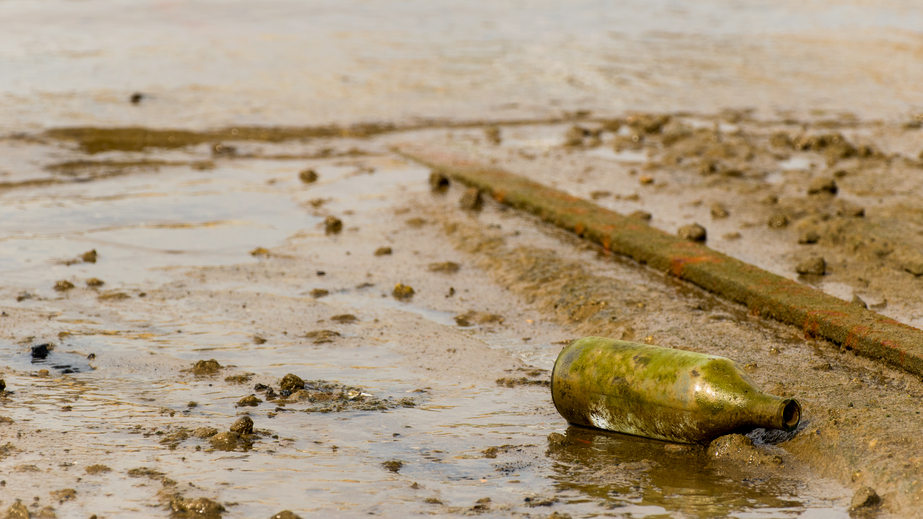Alberta Environmental 30 PDH Discount Package
Courses in this Package
Building Air Quality: Basics (C02-036)
Environmental Quality and Border Security: A 10-Year Retrospective (C04-060)
Implementing a Climate Change Program (C02-012)
In Situ Thermal Remediation - Part 1 (C09-006)
In Situ Thermal Remediation - Part 2 (C09-007)
Ozone Depleting Substances (ODS) Destruction in the US & Abroad (C04-059)

This online engineering PDH course presents the factors affecting Indoor Air Quality (IAQ): sources of indoor air contaminates, HVAC systems design and operation, pollutant pathways and driving forces, and building occupants. Moreover, this course illustrates how "effective communication" between building management and building occupants is very essential in preventing IAQ problems.
The indoor environment in any building is a result of the interaction between the site, climate, building system (original design and later modifications in the structure and mechanical systems), construction techniques, contaminant sources (building materials and furnishings, moisture, processes and activities within the building, and outdoor sources), and building occupants. Indoor air contaminants can originate within the building or be drawn in from outdoors. If contaminant sources are not controlled, Indoor Air Quality (IAQ) problems can arise, even if the HVAC system is properly designed and well-maintained.
EPA recognizes that IAQ problems present serious hazards to building occupants. Therefore, EPA developed this guide to protect building owners and building occupants from poor indoor air quality and to promote a healthy indoor environment in which the surroundings contribute to productivity comfort and a sense of health and well being.
This 2 PDH online course is applicable to civil, environmental and mechanical engineers, facility managers, building owners and all others who are interested in gaining an understanding of building air quality.
This P.Eng. continuing education course is intended to provide you with the following specific knowledge and skills:
- Identifying the elements required in the development of an indoor air quality program
- Understanding how temperature and humidity affect indoor contaminant levels
- Learning about the techniques to control odors and contaminates
- Learning about the symptoms attributed to IAQ problems and their effect on human health
- Establishing a communication system between building management and occupants that can help prevent IAQ problems
In this professional engineering CEU course, you need to review Tab I "Basics" of the EPA's, "Building Air Quality" publication (A Guide for Building Owners and Facility Managers).
Upon successful completion of the quiz, print your Certificate of Completion instantly. (Note: if you are paying by check or money order, you will be able to print it after we receive your payment.) For your convenience, we will also email it to you. Please note that you can log in to your account at any time to access and print your Certificate of Completion.

This online engineering PDH course provides basic information on environmental quality and protection in the context of existing and proposed border security infrastructure and measures.
Border security is an important national priority, and environmental protection in the border region is of critical importance, given the rich natural resource endowments of the region. The shape and form of security infrastructure installed along the border is a critical factor affecting these areas of special concern. Additional installation of security infrastructure along the border will have a large impact on the region, presenting both challenges and opportunities to enhance security while preserving or even improving environmental sustainability.
There are mainly five key overlapping challenges in which environmental protection intersects with border security. These include, tourism and recreation economy; habitat integrity and wildlife corridors; water management; flooding, trash and sediment control; Hazmat and emergency response; and air quality.
This 4 PDH online course is applicable to environmental engineers who are interested in learning more about improving border security infrastructure while preserving environmental sustainability in the region.
This P.Eng. continuing education course is intended to provide you with the following specific knowledge and skills:
- Familiarizing with the overlapping challenges between border security and environmental protection
- Gaining a general overview on the demographic and economic context in the border region
- Understanding the environmental protection and border security context
- Learning about the challenges and opportunities presented in the region
- Understanding the emergency response management and agreements at the federal, state and local levels
- Exploring several case studies in different areas along the border region
Upon successful completion of the quiz, print your Certificate of Completion instantly. (Note: if you are paying by check or money order, you will be able to print it after we receive your payment.) For your convenience, we will also email it to you. Please note that you can log in to your account at any time to access and print your Certificate of Completion.

This online engineering PDH course begins with a thorough explanation of the business (non-regulatory) reasons that every business can benefit from a climate change program and how to institute such a program. Then it covers how to estimate GHG emissions based on globally accepted standards. It also covers how to estimate GHG emissions from the processes you control and how to estimate them from other processes related to your product that your company may not have direct control over ("carbon footprint").
This course also describes how to conduct a life cycle analysis to enable your company to focus intelligently on effective GHG emission reduction strategies. Then, it discusses GHG emission reduction opportunities, including the basics of conducting an energy audit or assessment. Finally, it provides advice on how to manage your GHG emissions and reductions, set achievable goals, and to report successes.
As a result, there is growing pressure for companies and people to reduce GHG emissions with the hope of reversing climate change and its effects in the future. The Kyoto Protocol and other initiatives are introducing incentives for businesses to reduce GHG emissions. Climate change is ultimately a technical issue and must be addressed by different engineers (mechanical, environmental, chemical) applying their specialty knowledge to reduce GHG emissions.
This 2 PDH online course is intended for environmental engineers, mechanical engineers, HVAC equipment specialists, and construction workers who are interested in gaining a better understanding about implementing a climate change program.
This P.Eng. continuing education course is intended to provide you with the following specific knowledge and skills:
- Understand the nature and importance of the issue of climate change
- Explain why it is not just an environmental issue, but a core business value
- Provide management tips on initiating a climate change program at your company
- Understand how to perform a baseline GHG emissions inventory
- Understand how to perform a life cycle analysis (LCA)
- Learn how to manage GHG emission reduction goals
- Learn the basics about GHG emission reduction strategies, including an energy audit or assessment
- Learn how to manage and communicate successes
In this professional engineering CEU course, you need to review the course document titled "Implementing a Climate Change Program".
Upon successful completion of the quiz, print your Certificate of Completion instantly. (Note: if you are paying by check or money order, you will be able to print it after we receive your payment.) For your convenience, we will also email it to you. Please note that you can log in to your account at any time to access and print your Certificate of Completion.

This online engineering PDH course provides guidance for the appropriate screening and selection of in situ thermal remediation (ISTR) technologies, including steam enhanced extraction injection, electrical resistivity heating, and thermal conductive heating.
A significant number of sites are contaminated with high level of organic contaminants. These contaminated sites include hundreds of Federal installations and thousands of private facilities. The contaminants in these sites, especially non-aqueous phase liquids (NAPL), have been difficult to treat with conventional technologies such as groundwater extraction, bioremediation and soil vapor extraction. More aggressive technologies have been sought to address these conditions. These technologies include in situ chemical oxidation, surfactant/solvent flushing, and ISTR methods. ISTR methods represent the most aggressive and effective of these techniques.
This 9 PDH online course is applicable to environmental engineers, geologists, hydrogeologist and soil scientists who are interested in improving their knowledge on the appropriate use of in situ thermal remediation (ISTR) technologies.
This P.Eng. continuing education course is intended to provide you with the following specific knowledge and skills:
- Familiarizing with site characterization data necessary for the screening and designing of remediation systems using the three ISTR technologies (TCH, ERH, SEE)
- Gaining a general overview of multiphase flow and multi-component mass transfer in the subsurface and how elevated temperatures can enhance these processes for the removal of contaminants
- Learning about technology screening and feasibility studies for ISTR
- Understanding bench and pilot scale studies to determine if ISTR is an appropriate means to remediate a site
Upon successful completion of the quiz, print your Certificate of Completion instantly. (Note: if you are paying by check or money order, you will be able to print it after we receive your payment.) For your convenience, we will also email it to you. Please note that you can log in to your account at any time to access and print your Certificate of Completion.

This online engineering PDH course provides additional information on the appropriate screening, selection and application of in situ thermal remediation (ISTR) technologies including steam enhanced extraction injection, electrical resistivity heating, and thermal conductive heating.
A significant number of sites are contaminated with high levels of organic contaminants. These contaminated sites include hundreds of Federal installations and thousands of private facilities. The contaminants in these sites especially non-aqueous phase liquids (NAPL) have been difficult to treat with conventional technologies such as groundwater extraction, bioremediation and soil vapor extraction. More aggressive technologies have been sought to address these conditions including in situ chemical oxidation, surfactant/solvent flushing and ISTR methods. ISTR methods are the most aggressive and effective of these techniques.
This course is a continuation of “In Situ Thermal Remediation – Part 1” and discusses the design considerations once overall remediation strategies are defined, and presents an overview of case study information, as well as performance monitoring requirements, maintenance, and shutdown criteria that ensure safe and efficient remediation operations.
This 9 PDH online course is applicable to environmental engineers, geologists, hydrogeologist and soil scientists who are interested in expanding their knowledge on the selection and appropriate use of in situ thermal remediation (ISTR) technologies.
This P.Eng. continuing education course is intended to provide you with the following specific knowledge and skills:
- Understanding the design process of thermal conductive heating, electrical resistivity heating, and steam enhanced extraction
- Familiarizing with the subsurface monitoring for ISTR technologies
- Familiarizing with the operations and maintenance for ISTR technologies
- Learning about the ISTR system shutdown and confirmation of clean up
- Learning about the cost and performance remedial action report upon the completion of an ISTR project
- Gaining a general overview on a set of issues while implementing ISTR projects such as safety, community acceptance and education, contracting approaches, and regulatory issues
Upon successful completion of the quiz, print your Certificate of Completion instantly. (Note: if you are paying by check or money order, you will be able to print it after we receive your payment.) For your convenience, we will also email it to you. Please note that you can log in to your account at any time to access and print your Certificate of Completion.

This online engineering PDH course discusses the sources of ozone depleting substances (ODS) in the United States and abroad and defines the best practices for the safe, environmentally sound collection, recovery, transport, and destruction of these substances. In addition, this course explains the challenges associated with the safe destruction of ODS and assesses the costs for the ODS waste management process.
The Montreal Protocol on Substances that Deplete the Ozone Layer (Montreal Protocol), finalized in 1987, is a global agreement to protect the stratospheric ozone layer by phasing out the production and consumption of ODS.
While the global ODS phaseout is underway, a large amount of ODS is in equipment and products such as refrigerators and air conditioners (as refrigerant and foam blowing agent), foam contained in buildings, and fire protection systems and fire extinguishers, as well as in stockpiles held by countries and industrial and commercial users. Together these sources are referred to as ODS banks.
This 4 PDH online course is intended for environmental, sustainability, industrial, and mechanical engineers, as well as others interested in learning about the best practices for destruction of ODS.
This P.Eng. continuing education course is intended to provide you with the following specific knowledge and skills:
- Familiarizing with the sources of ODS
- Learning about the best management practices regarding the process of ODS destruction
- Familiarizing with ODS destruction technologies and facilities in the U.S. and worldwide
- Gaining perspective and metrics on the international efforts to destroy ODS
- Understanding the financial considerations of ODS recovery, transportation, and destruction costs
Upon successful completion of the quiz, print your Certificate of Completion instantly. (Note: if you are paying by check or money order, you will be able to print it after we receive your payment.) For your convenience, we will also email it to you. Please note that you can log in to your account at any time to access and print your Certificate of Completion.